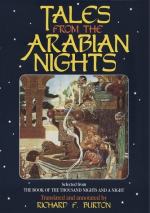6. What, then, was the origin of the notion of the 400 years of Hebrew slavery?
If the Egyptian inscriptions and papyri prove anything, it is this: that from the subjugation of Palestine by one of the Thormes down to the great invasion of the hordes from Asia Minor in the reign of Ramses iii., that country had never ceased to be a Pharaonic province; that during these four or five centuries every attempt to throw off the yoke had been crushed and its Semitic peoples deported to Egypt as slaves; that multitudes of them joined in the Exodus under Moses, and became incorporated with the Hebrews under the constitution and code adopted at Horeb (=Sinai? or Jebel Araif?). These people became “Seed of Abraham,” “Children of Israel,” by adoption, to which I have no doubt Paul refers in the “adoption” of Romans viii. 15-23; ix. 4; Gal. iv. 5; Eph. i. 5. In the lapse of ages this distinction between Bene Israel and Bene Jacob was forgotten, and therefore the very uncritical Masorites in their edition of the Old Testament “confounded the confusion” in this matter. With the disappearance of the 400 years and of the supposed two or three centuries covered by the book of Judges, the genealogies stand as facts. The mistake in the case of the Judges is in supposing them to have been consecutive, when, in fact, as the subjugations by neighbouring peoples were local and extended only over one or two tribes, half a dozen of them may have been contemporaneous.
7. Aaron and Moses were by their father Amram, great-grandchildren of Levi--by their mother his grandchildren (Ex. vi. 20). Joseph lived to see his own great-grandchildren. Moses must have been born before Joseph’s death.
8. There is one point determined in which the Hebrew and the Egyptian chronologies coincide. It is the invasion of Judea by Shishak of Egypt in the fifth year of Rehoboam, son of Solomon (1 Kings xiv. 25). Supposing the Egyptian chronology from the time of Minephtah ii. to be in the main correct, as given by Brugsch and others, the thirteen generations, Judah—Rehoboam, allowing three to a century, take us back to just that Minephtah. In his reign, according to Brugsch, Pharaoh sent breadstuffs to the Chittim in “the time of famine.” The Hebrew records and traditions connect Joseph’s prime ministry with a famine. By the genealogies it could have been only this in the time of Minephtah.
9. The Bene Jacob were but temporary sojourners in Goshen and always intended to return to Canaan. They were independent and had the right to do so. See what Joseph says in Gen. i. 24-25. But before this design was executed came the great irruption of the depopulated all Palestine, in the time of Ramses iii. Here was the opportunity for the Bene Jacob to enlarge their plans and to devise the conquest and possession of Palestine. According to Josephus, supported by Stephen (Acts vii. 22), Moses was a man




